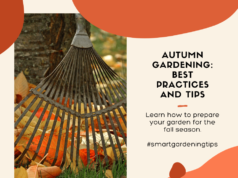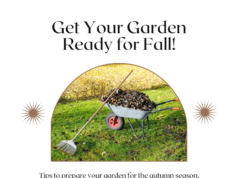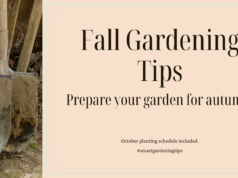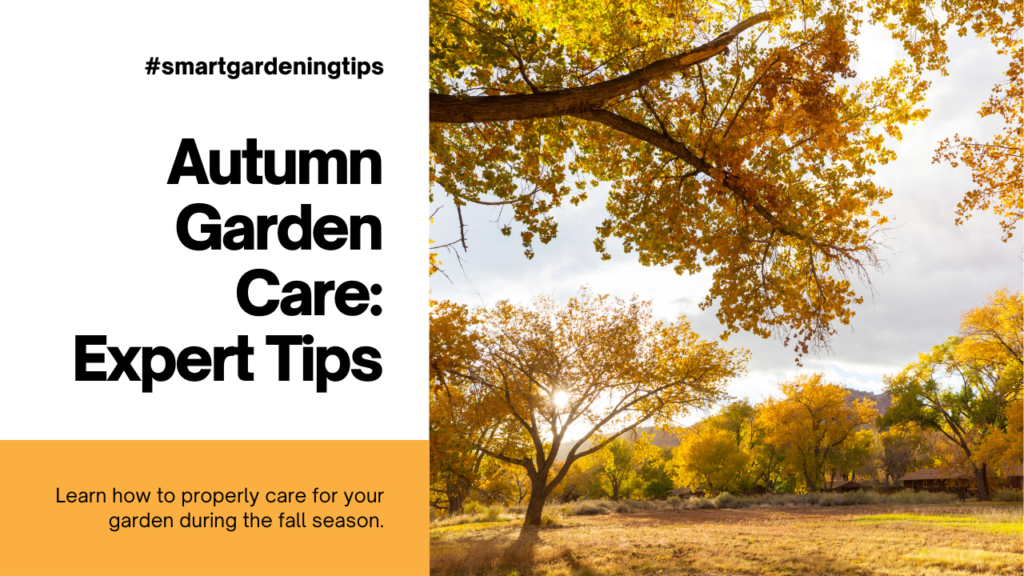
In this section, you will find essential tips to prepare your autumn garden for beautiful fall foliage and ensure it is ready for the upcoming winter. Discover the best practices to take care of your garden during the autumn season.
As the summer heat fades and leaves start to change color, it’s time to shift your focus to autumn garden care. Proper preparation will not only enhance the beauty of your garden but also ensure its resilience during the colder months ahead. Whether you’re an experienced gardener or just starting out, these tips will help you navigate the autumn season with confidence.
The first step is to assess your garden’s current state. Look for any signs of disease or pest infestation and address them promptly. Clear away any dead plants, fallen leaves, and garden debris to maintain a clean and healthy environment for your plants.
Next, it’s important to prepare the soil for autumn planting. Remove weeds and loosen the soil to promote better drainage and root growth. Consider adding organic matter like compost or well-rotted manure to enrich the soil and improve its nutrient content.
Once the soil is prepared, you can start planting new foliage for autumn color. Choose plants that thrive in cooler temperatures and offer vibrant shades of red, orange, and yellow. Transplant any existing plants that need a new location or divide perennials to encourage healthy growth.
Throughout the autumn season, pruning and trimming become essential tasks. Remove any dead or damaged branches to prevent them from falling during winter storms. Trim back overgrown plants to maintain their shape and promote better air circulation.
As the temperatures drop, it’s important to protect your garden from frost and cold winds. Consider using mulch to insulate the soil and protect plant roots. Cover delicate plants with frost blankets or burlap wraps to shield them from freezing temperatures.
Regular watering is still necessary during the autumn months. Although the weather may cool down, plants still require hydration to stay healthy. Water deeply but less frequently to encourage strong root systems.
Lastly, as autumn transitions into winter, proper garden cleanup is crucial. Rake up fallen leaves and remove any remaining plant debris. Dispose of them properly to prevent the spread of diseases and pests. Don’t forget to clean and store your garden tools in a dry place for their longevity.
Key Takeaways:
- Assess your garden’s current state and clear away any dead plants or debris.
- Prepare the soil by removing weeds and adding organic matter.
- Choose plants that thrive in cooler temperatures and offer vibrant autumn colors.
- Prune and trim your plants to maintain their health and shape.
- Protect your garden from frost and cold winds with mulch and covers.
Essential Tools for Autumn Garden Care
Before getting started with your autumn garden care routine, it’s crucial to have the right tools at your disposal. Investing in high-quality tools can make your autumn garden maintenance tasks easier and more efficient, ensuring your garden stays in optimal shape throughout the season. Here are some essential tools you’ll need:
Gardening Gloves
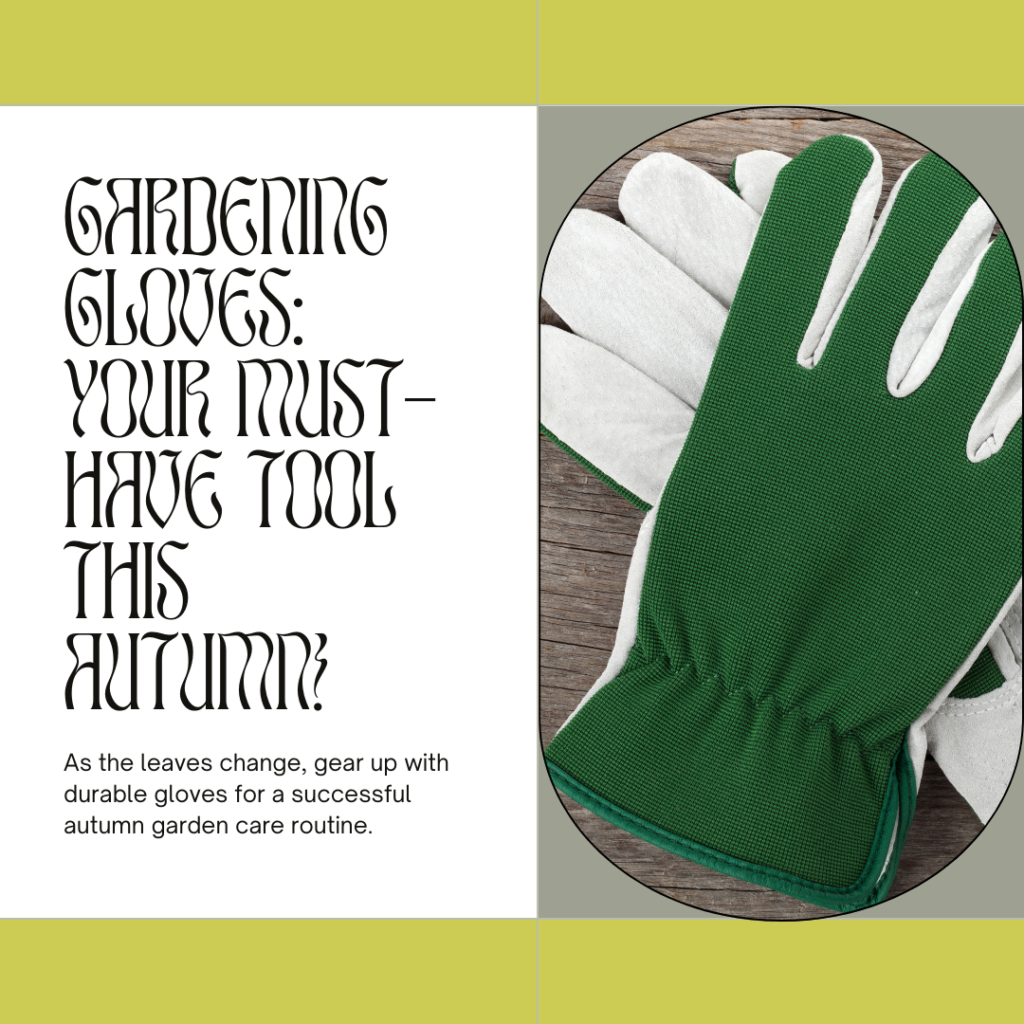
Protecting your hands while working in the garden is essential, especially during the cooler autumn months. Invest in a pair of durable gardening gloves that offer protection from thorns, sharp objects, and cold temperatures.
Pruning Shears
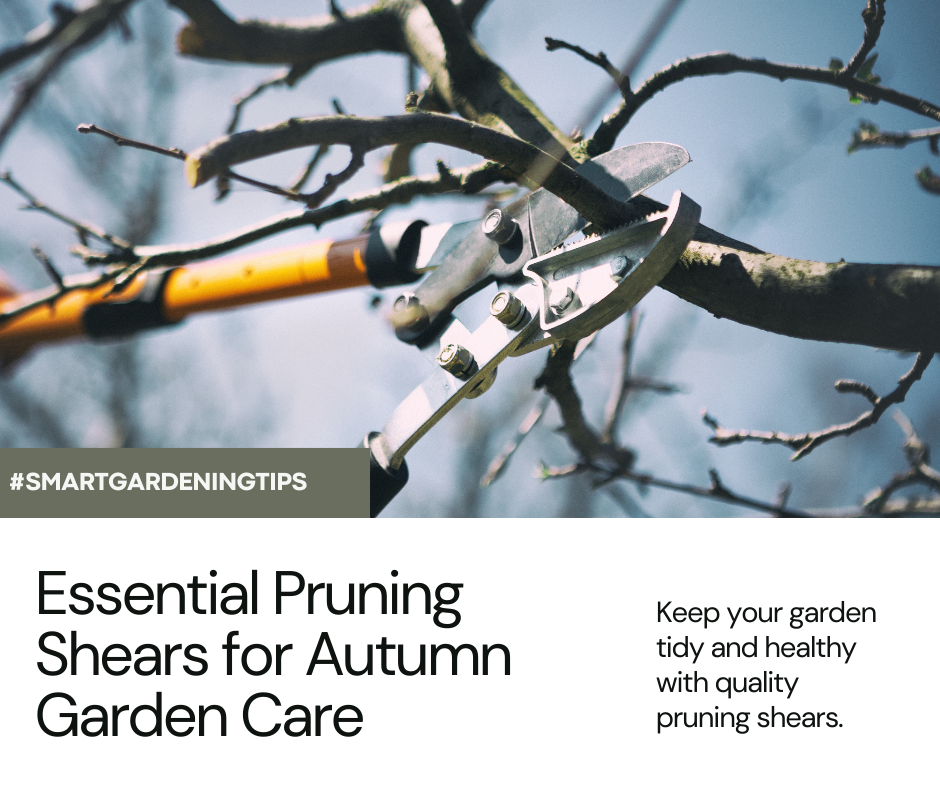
Pruning shears are a must-have tool for maintaining the health and shape of your plants during autumn. They allow you to remove dead or overgrown branches, ensuring proper air circulation and light exposure for your garden. Look for pruning shears with a comfortable grip and sharp blades for precise cuts.
Rake
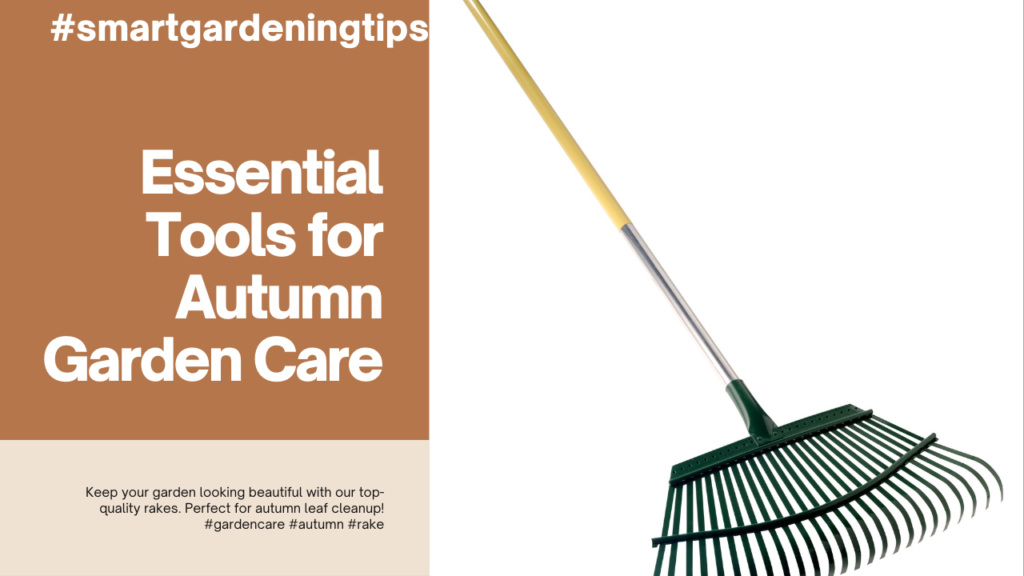
A sturdy rake is an essential tool for cleaning up fallen leaves and debris from your garden. Clearing away this organic matter prevents the growth of mold and diseases while keeping your garden neat and tidy. Choose a rake with flexible tines to efficiently gather leaves without damaging the soil.
Garden Fork
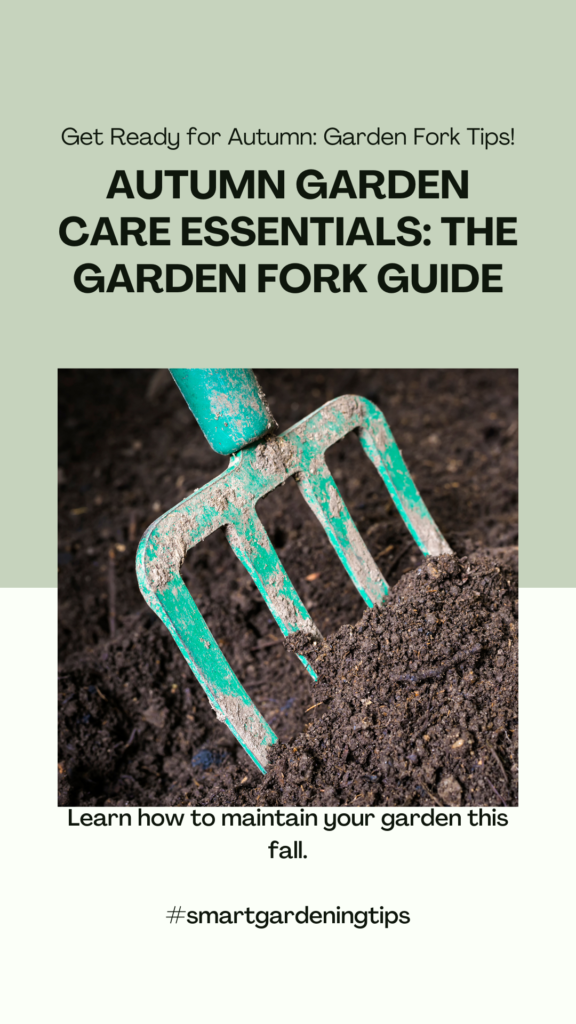
A garden fork is invaluable for loosening compacted soil and improving drainage in your garden. During autumn, it’s crucial to prepare your soil for the following season. A garden fork allows you to aerate the soil, providing better access to nutrients for your plants’ roots.
Garden Pruning Saw
A garden pruning saw is essential for cutting through thicker branches that pruning shears may struggle with. It’s especially useful for pruning larger trees and shrubs, ensuring they stay healthy and well-maintained.
Fertilizer Spreader
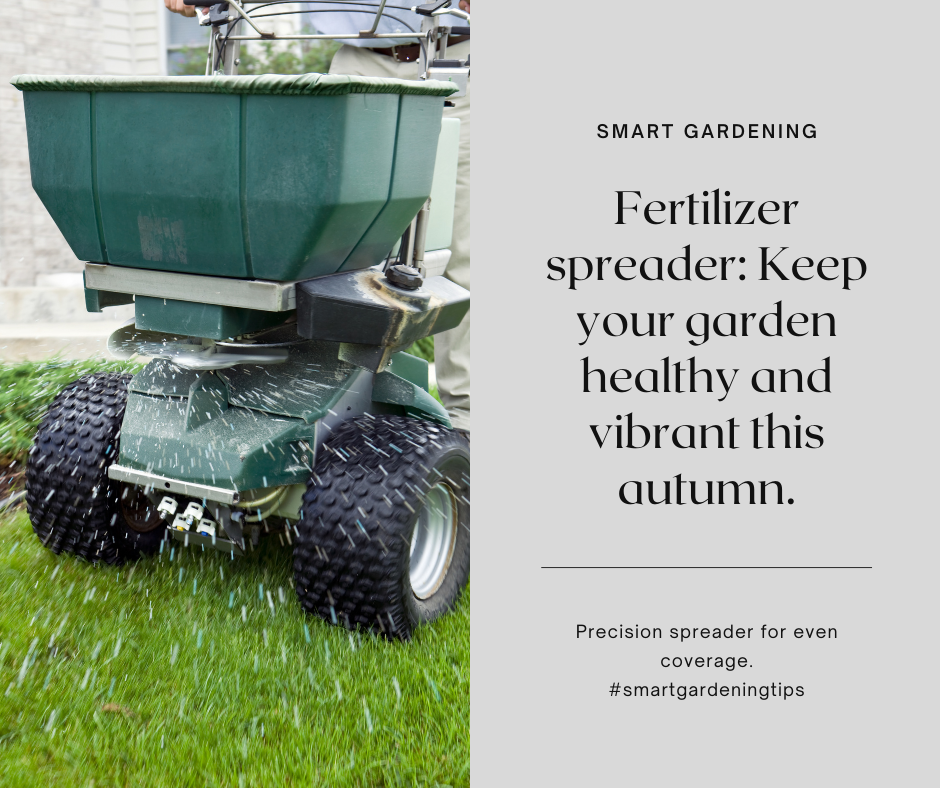
To nurture your plants during the autumn season, a fertilizer spreader is a valuable tool. It ensures an even distribution of fertilizer across your garden, providing the necessary nutrients for healthy growth. Look for a spreader that suits your garden size and offers adjustable settings.
Watering Can or Hose
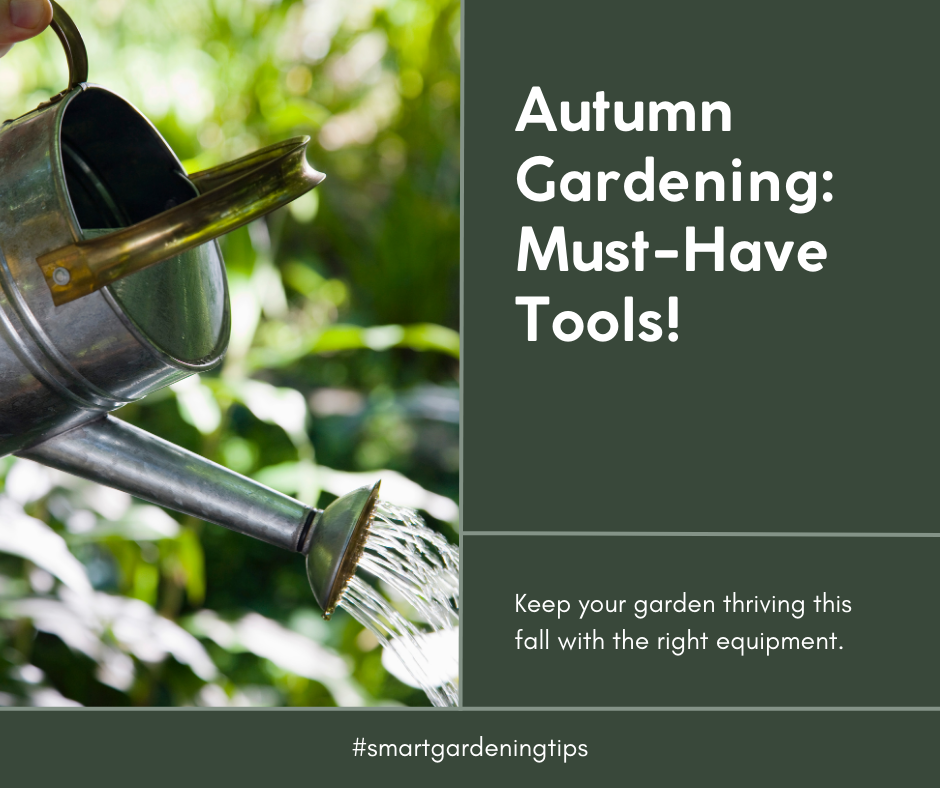
Although autumn brings cooler temperatures, it’s important to keep your garden adequately hydrated. A watering can or hose allows you to water your plants as needed, ensuring they receive the right amount of moisture.
Having these essential tools readily available will make your autumn garden care tasks much more manageable. Take the time to invest in quality tools that will last for many seasons to come.
Pruning and Trimming: Importance in Autumn Garden Care
In the world of gardening, pruning and trimming are essential practices that help maintain the health and aesthetics of your autumn garden. As the leaves begin to change color and fall, it’s crucial to understand the importance of pruning and trimming during the autumn season.
When it comes to pruning and trimming, timing is everything. Autumn provides an ideal window of opportunity to remove dead or damaged branches, shape overgrown shrubs, and create a well-balanced garden landscape. By practicing pruning and trimming during the autumn months, you are setting the foundation for healthy growth and vibrant displays in the seasons to come.
Benefits of Pruning and Trimming in Autumn
Pruning and trimming have numerous benefits that contribute to the overall well-being of your autumn garden. Let’s explore some of the key advantages:
- Promotes plant health: By removing dead or diseased branches, you prevent the spread of pests and diseases, keeping your plants in optimal condition.
- Controls growth: Autumn pruning helps manage the size and shape of plants, preventing overcrowding and ensuring adequate airflow and sunlight penetration.
- Enhances aesthetics: Trimming overgrown branches and shaping shrubs can improve the visual appeal of your garden, creating a neat and well-maintained appearance.
- Encourages new growth: Pruning stimulates new growth by redirecting the plant’s energy to the remaining healthier branches, resulting in stronger and more vigorous plants.
Best Practices for Pruning during the Autumn Months
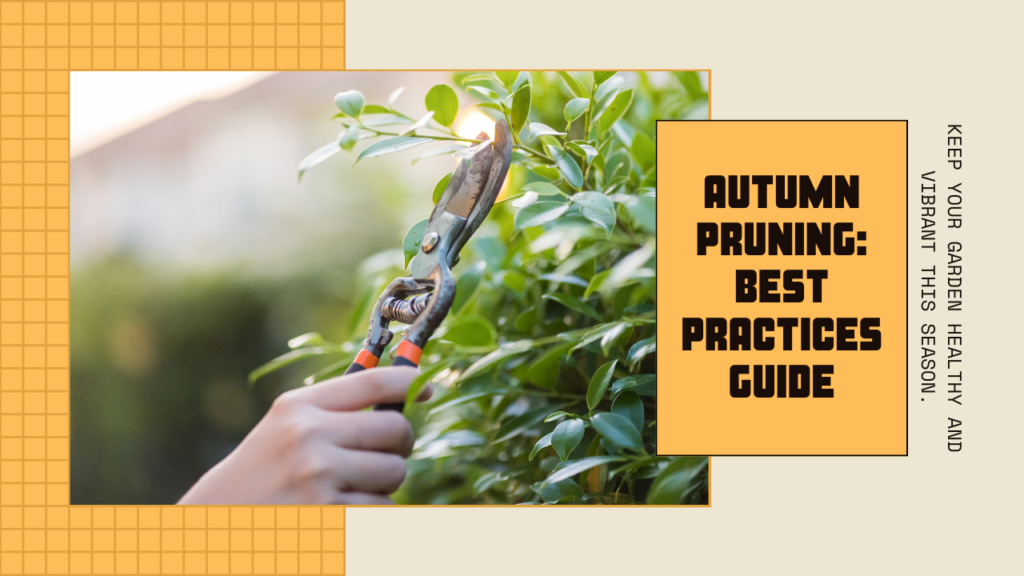
When it comes to pruning during the autumn months, it’s important to follow some best practices to ensure optimal results:
- Inspect your plants: Before you start pruning, carefully examine your plants for any signs of disease or pest infestation. It’s essential to identify and remove affected branches promptly.
- Use the right tools: Invest in high-quality pruning shears, loppers, and saws to ensure clean cuts and minimize damage to your plants. Pruning and trimming tools specifically designed for autumn garden care will make the process easier and more efficient.
- Practice selective pruning: Remove dead or damaged branches, as well as any weak or crossing limbs. Focus on maintaining the natural shape of the plant while removing excessive growth.
- Follow proper techniques: Make clean, angled cuts just above a bud or branch collar. Avoid cutting too close or leaving stubs, as this can hinder proper healing and invite diseases.
- Consider professional help: If you’re unsure about the pruning and trimming process or dealing with large trees, it’s advisable to seek assistance from a certified arborist or experienced garden professional.
Remember, pruning and trimming are ongoing tasks that require regular attention. By incorporating these best practices into your autumn garden care routine, you can enjoy a healthier, more beautiful garden throughout the seasons.
Soil Preparation for Autumn Gardening
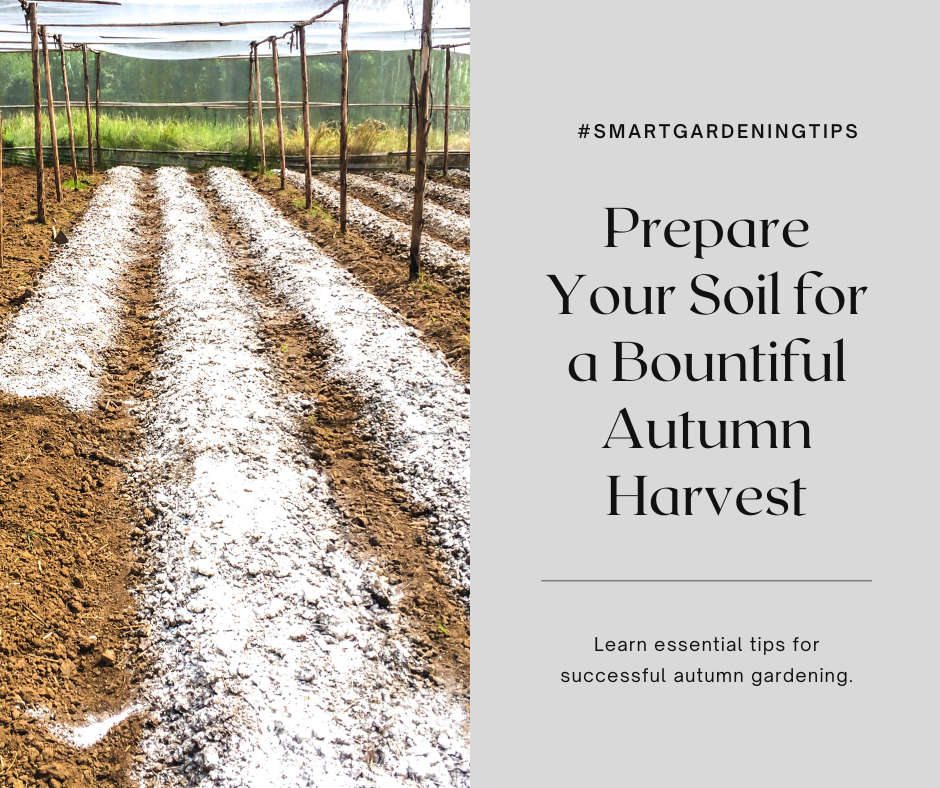
When it comes to autumn gardening, one of the most crucial steps you can take for a successful harvest is proper soil preparation. The health of your plants depends on the quality and nutrient content of the soil. By preparing your soil appropriately, you set the foundation for vibrant and abundant autumn foliage.
To ensure your soil is ready for autumn gardening, follow these essential tips:
1. Test Your Soil
Before you begin any soil preparation, it’s important to determine the pH level and nutrient content of your soil. You can easily do this by conducting a soil test. Soil testing kits are readily available at garden centers or through online resources. Testing your soil provides crucial insights into its composition, allowing you to make informed decisions regarding necessary amendments.
2. Clean Up Your Garden
Before you start amending your soil, clear away any debris or dead plants from your garden beds. Removing weeds, fallen leaves, and decaying vegetation helps prevent the proliferation of diseases and pests that can harm your autumn plants. Additionally, good garden hygiene sets the stage for healthier growth during the cooler months.
3. Add Organic Matter
Enhance your soil’s fertility and structure by incorporating organic matter such as compost, well-rotted manure, or leaf mold. Organic matter improves soil drainage, aeration, and nutrient retention, creating the perfect environment for your plants’ root development. Spread a layer of organic matter on top of your garden beds and gently work it into the soil using a garden fork or tiller.
4. Mulch Your Garden
Applying a layer of mulch to your garden beds helps regulate soil temperature and moisture levels, reducing the risk of extreme fluctuations that can stress your plants. Mulch also prevents weed growth and erosion, ensuring a healthier and more attractive garden. Opt for organic mulches such as straw, wood chips, or leaves, and spread them evenly around your plants, leaving a small space around the stems to prevent rotting.
5. Avoid Overwatering
While it’s essential to maintain proper soil moisture, be cautious not to overwater your autumn plants. Excessive moisture can lead to root rot and other fungal diseases. Monitor the moisture levels in your soil regularly, allowing it to dry out slightly between watering sessions. Adjust your watering schedule according to the specific needs of your plants and the weather conditions in your area.
By following these soil preparation tips, you will create a fertile and supportive environment for your autumn garden to thrive. Remember, healthy soil is the key to healthy plants and a bountiful harvest.
Choosing the Right Fertilizers for Autumn Plants

Fertilization is an essential component of effective autumn garden care. By choosing the right fertilizers for your autumn plants, you can provide them with the necessary nutrients to support optimal growth and resilience during this season. Here are some important factors to consider when selecting fertilizers for your autumn garden:
1. Nutrient Balance
It’s crucial to choose a fertilizer that provides a balanced ratio of essential nutrients for your autumn plants. Look for fertilizers with formulations labeled specifically for autumn use, such as a balanced NPK ratio of nitrogen (N), phosphorus (P), and potassium (K). These nutrients are vital for healthy plant growth and development.
2. Slow-release Formulations
Opt for slow-release fertilizers that gradually release nutrients over time. These formulations ensure a consistent supply of nutrients to plants, promoting steady growth throughout the autumn season. Slow-release fertilizers also minimize the risk of nutrient runoff, which can harm the environment.
3. Organic Options
Consider using organic fertilizers for your autumn plants. Organic fertilizers are derived from natural sources and provide nutrients in a more sustainable and environmentally friendly manner. They help improve soil health and fertility over time, ensuring long-term benefits for your garden.
4. Micronutrients
In addition to the primary macronutrients (NPK), micronutrients play a crucial role in plant health. Look for fertilizers that contain essential micronutrients such as iron, zinc, and manganese. These micronutrients are vital for various metabolic processes in plants and contribute to overall plant vitality.
“Choosing the right fertilizers for your autumn plants can make a significant difference in their overall health and productivity. By providing them with the ideal combination of nutrients, you’re setting them up for success throughout the autumn season.”
Remember to always follow the instructions provided on the fertilizer packaging for proper application rates and timing. Over-fertilization can lead to nutrient imbalances and potential damage to your plants. Conduct a soil test to determine any specific nutrient deficiencies and tailor your fertilizer choices accordingly.
Now that you know how to choose the right fertilizers for your autumn plants, you can ensure their nourishment and vitality throughout the season. Take the necessary steps to provide your garden with the nutrients it needs, and watch your autumn plants thrive with vibrant colors and robust growth.
| Fertilizer Type | Benefits | Considerations |
|---|---|---|
| Granular Fertilizers | – Slow-release nutrients – Easy to apply | – Risk of over-fertilization if not applied correctly |
| Liquid Fertilizers | – Quick absorption – Provides immediate nutrients | – Requires frequent application – Can leach away with heavy rainfall |
| Organic Fertilizers | – Improves soil health – Environmentally friendly | – Slower release of nutrients – May require larger quantities |
Planting and Transplanting for Autumn Color
Adding new foliage to your autumn garden can enhance its beauty and provide vibrant colors. As the leaves start transforming into stunning hues of red, orange, and yellow, planting and transplanting new foliage is a fantastic way to embrace the change of seasons and create a captivating display of autumn colors.
When it comes to planting and transplanting for autumn color, here are some tips to ensure healthy growth and stunning aesthetics:
Choosing the Right Plants

Before you begin planting or transplanting, it’s essential to select the right plants that thrive in the autumn season. Look for foliage plants that offer vibrant colors such as Japanese maple, burning bush, or ornamental grasses.
Preparing the Soil
Proper soil preparation is crucial for the success of your plants. Ensure that the soil is well-draining and rich in nutrients. Incorporate organic matter, such as compost or well-rotted manure, to improve soil structure and fertility.
Planting Techniques
When planting new foliage, dig a hole slightly larger than the plant’s root ball and gently tease the roots before placing it in the hole. Make sure that the plant is at the same depth as it was in its previous container or location. Backfill the hole with soil and gently firm it around the plant’s base.
Transplanting Tips
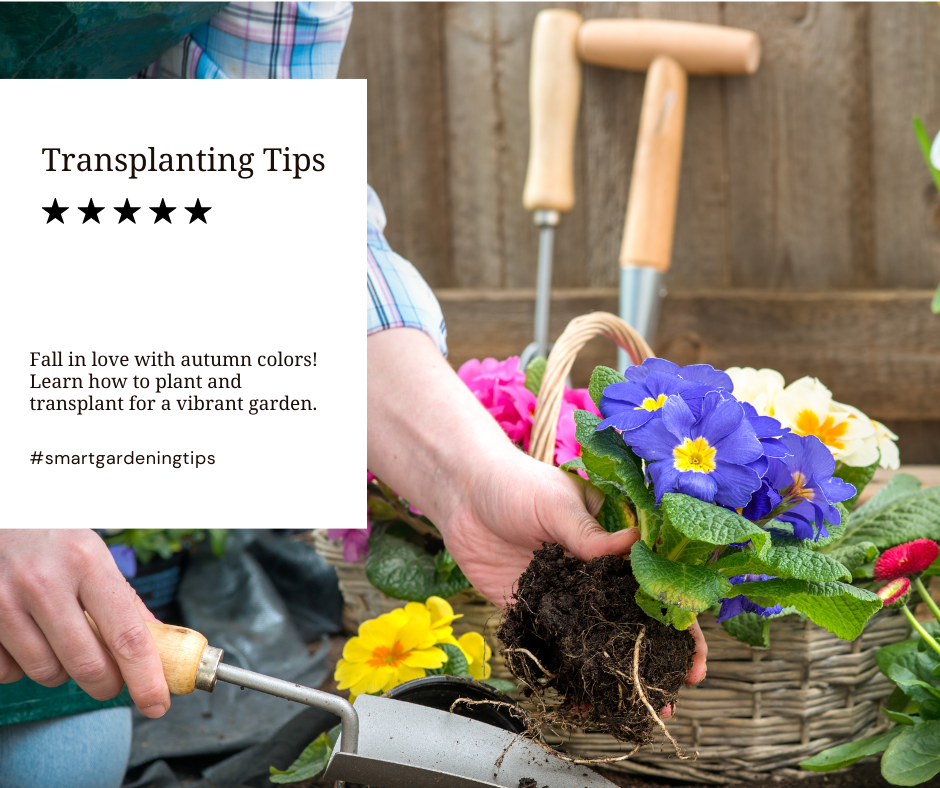
If you’re transplanting existing plants to a new area of your garden, take care to minimize root disturbance. Dig around the plant’s root zone and lift it carefully, ensuring that the majority of the roots remain intact. Choose a location with similar sunlight and soil conditions to ensure a smooth transition for the plant.
Tip: Water new plantings thoroughly after planting or transplanting to help settle the soil and establish the roots.
As the plants establish themselves, regular watering and mulching will be key to their success. Keep an eye on the soil moisture levels and provide additional water when needed. Applying a layer of mulch around the base of the plants will help conserve moisture and suppress weed growth.
By following these planting and transplanting tips, you can create a stunning autumn garden with a kaleidoscope of colors. Whether you’re adding new foliage or relocating existing plants, the careful selection and placement of vibrant autumn contenders will make your garden come alive with the breathtaking beauty of nature’s own canvas.
Best Plants for Autumn Color
| Plant | Color | Light Requirements | Soil Conditions |
|---|---|---|---|
| Japanese Maple | Red, Orange, Yellow | Partial Shade | Well-drained, Moist |
| Burning Bush | Red | Full Sun to Partial Shade | Well-drained |
| Ornamental Grasses | Various (Blonde, Copper, Purple) | Full Sun | Well-drained |
Fall Cleanup: Importance in Garden Care
As the autumn season begins, it’s time to shift our attention to fall cleanup, an integral part of maintaining a healthy and beautiful garden. Fall cleanup not only helps prepare your garden for the coming winter but also ensures the overall health and vitality of your plants. By removing debris, properly disposing of garden waste, and tidying up your outdoor space, you are setting the stage for a successful garden next year.
One of the key benefits of fall cleanup is the prevention of pests and diseases. Fallen leaves, decaying plant material, and other debris can become potential breeding grounds for insects and pathogens. By clearing away these organic matter, you reduce the risk of pest infestations and disease outbreaks, creating a healthier environment for your plants.
Proper disposal of garden waste is an essential aspect of fall cleanup. When pruning shrubs, trimming trees, or clearing out flower beds, it’s important to dispose of the waste responsibly. Organic material such as leaves, branches, and plant trimmings can be composted, providing valuable nutrients for future use. However, some waste, such as diseased plants or invasive weeds, should be bagged and disposed of properly to prevent the spread of diseases and invasive species.
“Fall cleanup not only helps prepare your garden for the coming winter but also ensures the overall health and vitality of your plants.”
In addition to preventing pests and diseases, fall cleanup also promotes better air circulation and sunlight exposure for your plants. Removing fallen leaves and other debris allows air to circulate freely, reducing the risk of fungal diseases and promoting healthier growth. Similarly, clearing away overgrown vegetation ensures that each plant receives adequate sunlight, improving photosynthesis and overall plant health.
As you embark on your fall cleanup journey, remember to take the time to evaluate your garden’s needs. Remove any dead or diseased plants, trim back overgrown shrubs, and weed out invasive species. Take this opportunity to give your garden a fresh start and create a neat, clean space ready for winter hibernation.
Furthermore, fall cleanup offers an opportunity to assess your garden’s performance and plan for the future. Take note of any areas in need of improvement, such as soil amendments or the addition of new plants. This evaluation will help guide your gardening efforts and set the foundation for a successful next growing season.
Proper Disposal Methods for Garden Waste
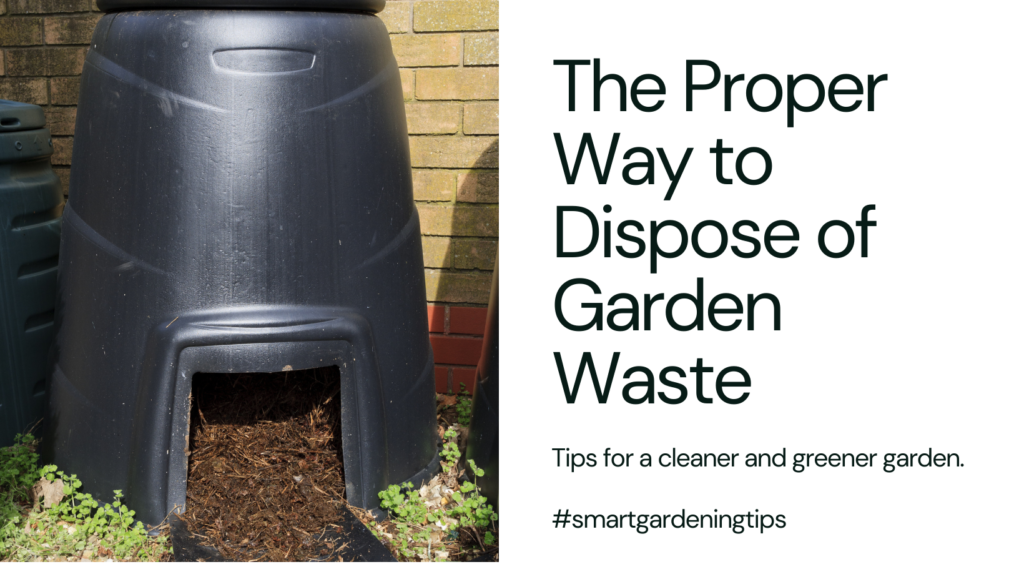
When it comes to disposing of garden waste, it’s important to follow environmentally friendly practices. Here’s a list of proper disposal methods:
- Composting: Use fallen leaves, plant trimmings, and other organic garden waste to create nutrient-rich compost for your plants. Composting not only reduces waste but also provides valuable nutrients that can be incorporated back into your garden.
- Bagging: Bag and dispose of diseased plants, invasive weeds, or other materials that may spread diseases or invasive species. Contact your local waste management facility to find out the proper procedures for disposing of these materials in your area.
- Recycling: Look for recycling programs in your community that accept specific types of garden waste, such as plastic pots or containers. Recycling helps reduce landfill waste and promotes sustainable gardening practices.
By following these proper disposal methods, you contribute to a cleaner environment and minimize the negative impact on ecosystems.
Remember, fall cleanup is not just a chore; it’s a crucial step in garden care that sets the stage for a thriving garden next year. By investing time and effort into proper fall cleanup and disposal of garden waste, you create a healthier environment for your plants, prevent pest and disease issues, and ensure the long-term success of your garden.
| Benefits of Fall Cleanup | Proper Disposal Methods |
|---|---|
| Prevents pests and diseases | Composting |
| Promotes better air circulation and sunlight exposure | Bagging |
| Assesses garden’s performance and future planning | Recycling |
Protecting Your Garden for Winter
As the winter months approach, it’s essential to take the necessary steps to protect your garden and ensure the survival of your plants. By adequately preparing your garden for winter, you can also set the foundation for a vibrant and thriving garden come spring. Here are some key measures you should consider:
1. Clean Up the Garden
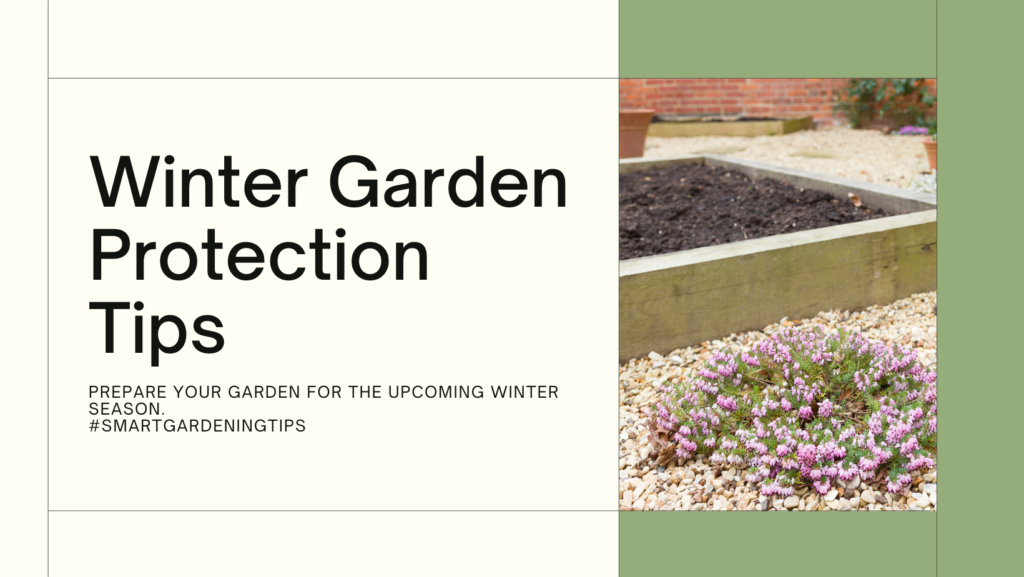
Start by cleaning up your garden and removing any fallen leaves, dead plant materials, and debris. This will help prevent pests and diseases from overwintering in your garden. Dispose of the garden waste properly.
2. Mulch for Insulation
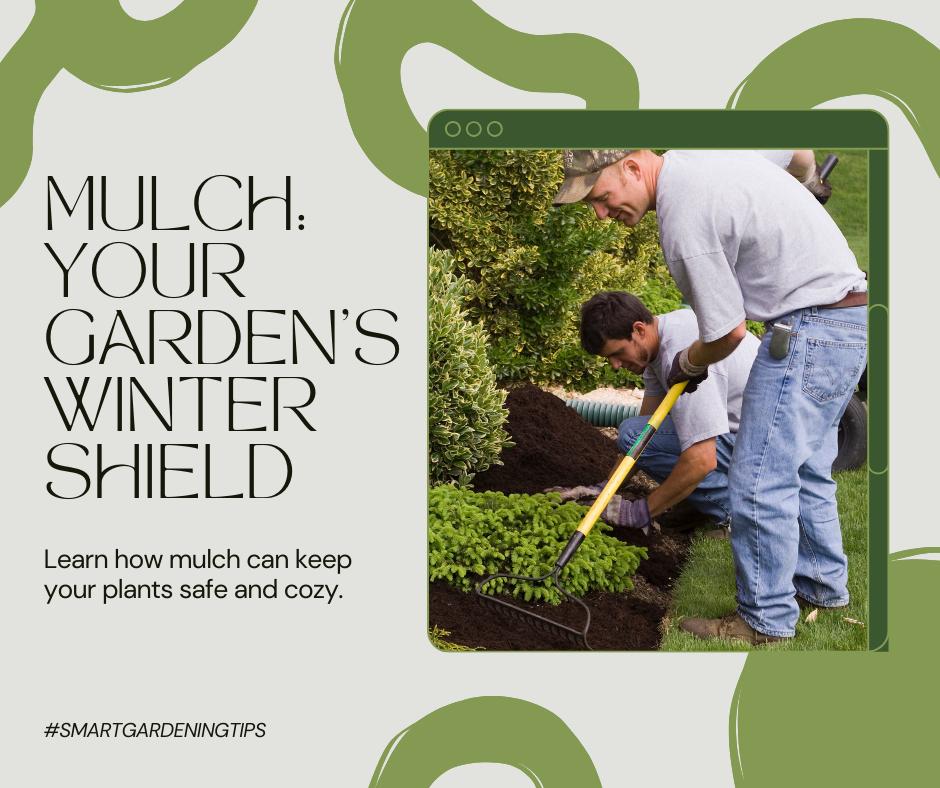
Applying a layer of mulch to your garden beds can provide insulation and protect the roots of your plants from freezing temperatures. Use organic mulch such as shredded leaves, straw, or wood chips. Spread a 2-3 inch layer around the base of your plants, making sure not to cover the crowns or stems.
3. Protect Vulnerable Plants
Identify any plants that are more susceptible to cold weather and take extra precautions to protect them. This may include covering them with frost blankets or burlap wraps. For potted plants, consider moving them to a sheltered area or the protection of a greenhouse.
4. Watering Techniques
Adjust your watering schedule to suit the changing weather conditions. As temperatures drop, reduce the frequency of watering but make sure to give your plants a good soak before the ground freezes. Avoid overwatering, as excessive moisture can lead to root rot.
5. Prune and Trim
Remove any dead or diseased branches from your trees and shrubs. Pruning and trimming can promote healthier growth and prevent damage from heavy snow or ice accumulation. However, be cautious not to prune plants that bloom in early spring, as this may remove the flower buds.
6. Protect Garden Structures
Inspect and reinforce any garden structures such as trellises, arbors, or fences. Remove any weak or damaged components and secure them properly to withstand strong winds or heavy snowfall.
7. Pest and Disease Management
Take preventive measures to control pests and diseases, as they can thrive in the absence of natural predators during winter. Apply organic pest control methods or consult a professional if necessary. Also, remove any dead or infected plant materials to reduce the chances of future infestations.
By following these steps to protect your garden for winter, you can safeguard your plants, ensure their resilience, and lay the groundwork for a flourishing garden in the upcoming spring season. Remember, a little preparation goes a long way in preserving the beauty and health of your garden.
Winterizing Tips for Garden Protection
As the colder months approach, it’s important to take proactive measures to protect your garden from the harsh winter weather. Winterizing your garden involves implementing specific strategies to ensure the safety and longevity of your beloved plants. By following these winterizing tips, you can safeguard your garden from freezing temperatures and other potential hazards.
1. Insulate Your Plants
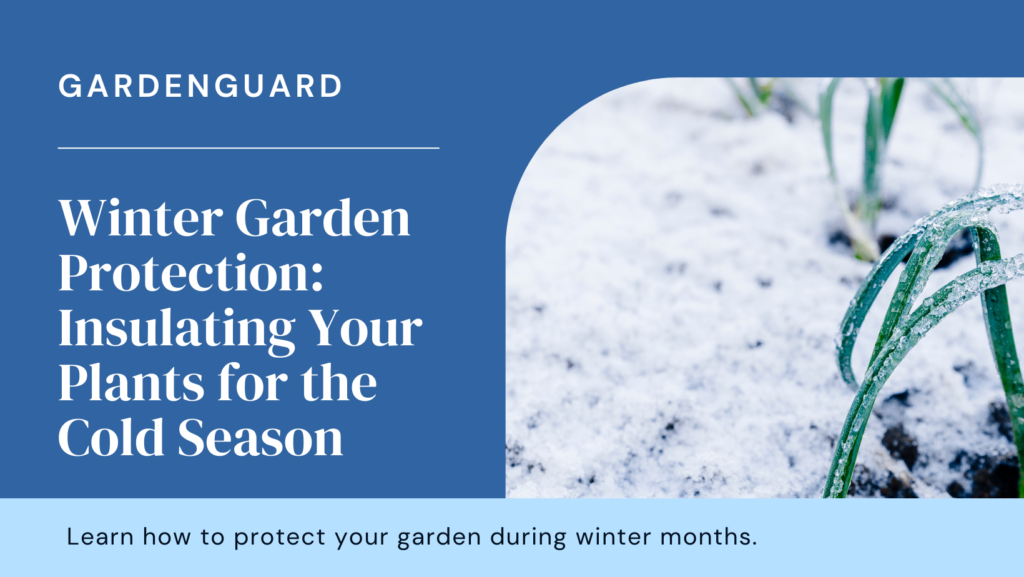
One of the most effective ways to protect your garden during the cold season is to provide insulation for your plants. Covering delicate plants with mulch or straw can shield them from freezing temperatures and retain heat in the soil. Additionally, consider using protective covers or wrapping materials for vulnerable plants, such as rose bushes or small trees.
2. Watering Techniques
Proper watering techniques are crucial for winterizing your garden. Reduce the frequency of watering as winter approaches, but make sure to thoroughly water your plants before the ground freezes. This ensures that your plants have enough moisture to withstand the winter months. Avoid overwatering, as excessive moisture can lead to root rot and other plant diseases.
3. Trim and Prune
Trimming and pruning are essential tasks for winterizing your garden. Remove any dead or damaged branches from trees and shrubs to prevent breakage under the weight of snow or ice. Prune your perennials to a suitable height, cutting them back to encourage healthy growth in the spring. Proper pruning also helps maintain the shape and structure of your plants.
4. Clean Up the Garden
Before the first frost sets in, it’s important to clean up your garden. Remove any fallen leaves, dead plants, or debris that may harbor pests or diseases. Clearing out the garden not only improves its appearance but also minimizes the risk of pests and diseases spreading to healthy plants. Proper disposal of garden waste is essential, so consider composting or recycling whenever possible.
5. Protect Your Garden Structures
Garden structures, such as arbors, trellises, and gazebos, also need protection during the winter months. Inspect these structures for any damage and make necessary repairs before winter arrives. Applying a protective coat of sealant or paint can help prevent moisture damage. Consider covering delicate structures with tarps or wrapping materials to shield them from snow, ice, and harsh winds.
6. Consider Cold-Tolerant Plants
When planning your garden, consider incorporating cold-tolerant plants that can withstand the winter conditions in your region. These plants are better equipped to survive the colder months and require less maintenance. Evergreen shrubs, winterberry holly, and ornamental grasses are examples of resilient plants that can add beauty and color to your winter garden.
7. Prepare Your Garden Equipment
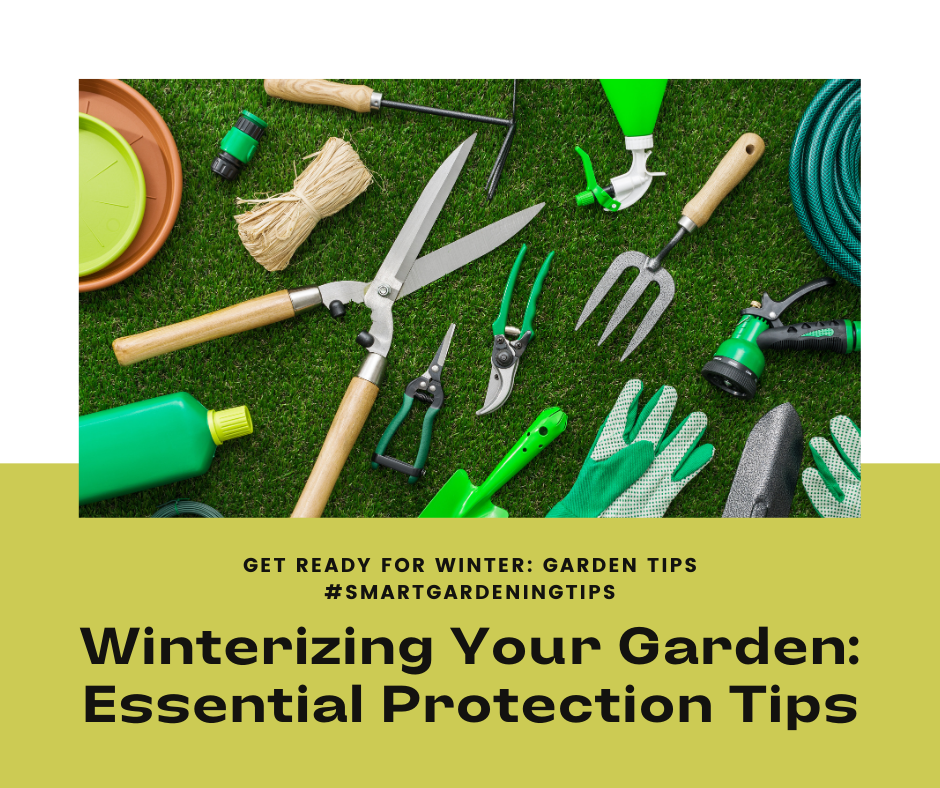
Winterizing your garden also involves preparing your garden equipment for storage. Clean and dry your tools before stowing them away to prevent rust and damage. Apply a thin layer of oil to metal parts to protect them from moisture. Properly storing your equipment ensures they will be in good condition when you’re ready to use them again in the spring.
By following these winterizing tips, you can ensure the protection and resilience of your garden during the cold season. Taking these proactive measures will not only preserve your plants but also make it easier to revive your garden when spring arrives. Embrace the winter months knowing that you have taken the necessary steps to safeguard your garden and allow it to thrive.
Maintaining Garden Structure and Features
When it comes to caring for your garden, it’s easy to get caught up in tending to the plants and flowers. However, it’s equally important to maintain the overall structure and features of your garden. By taking care of these elements, you can ensure that your garden remains visually appealing and functional throughout the autumn season. Here are some tips to help you maintain the garden structure and features:
1. Inspect and Repair Fences and Gates

Check your garden fences and gates for any damage or wear. Repairing any broken or loose components will not only enhance the aesthetics of your garden but also provide security and privacy. Consider a fresh coat of paint or varnish to protect wooden fences from the effects of autumn weather.
2. Clean and Maintain Garden Paths
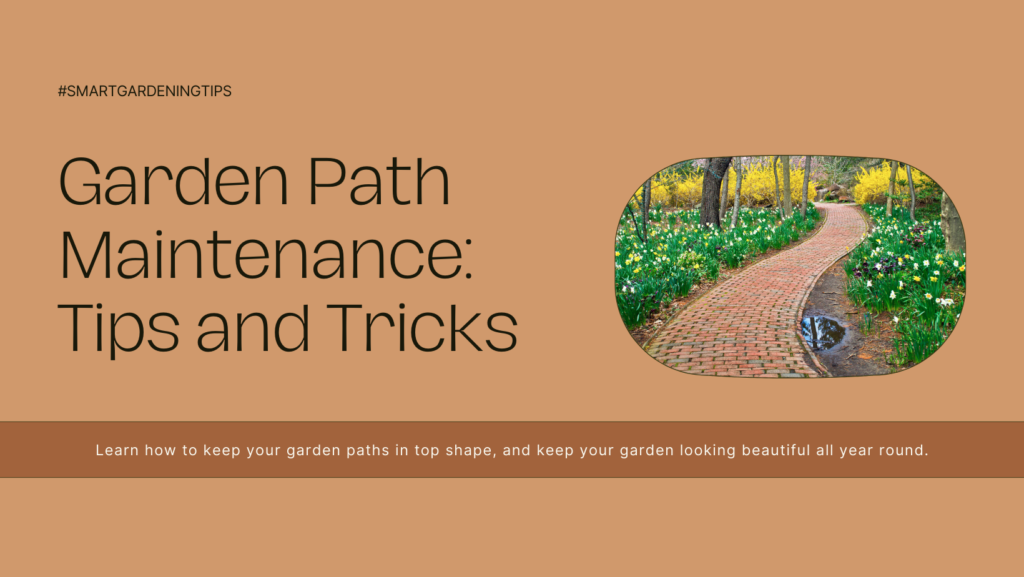
Clear away any debris, fallen leaves, or weeds from your garden paths. This will not only improve the overall appearance but also prevent slips and trips. Additionally, consider adding a fresh layer of gravel or mulch to pathways to keep them neat and well-maintained.
3. Prune and Shape Hedges
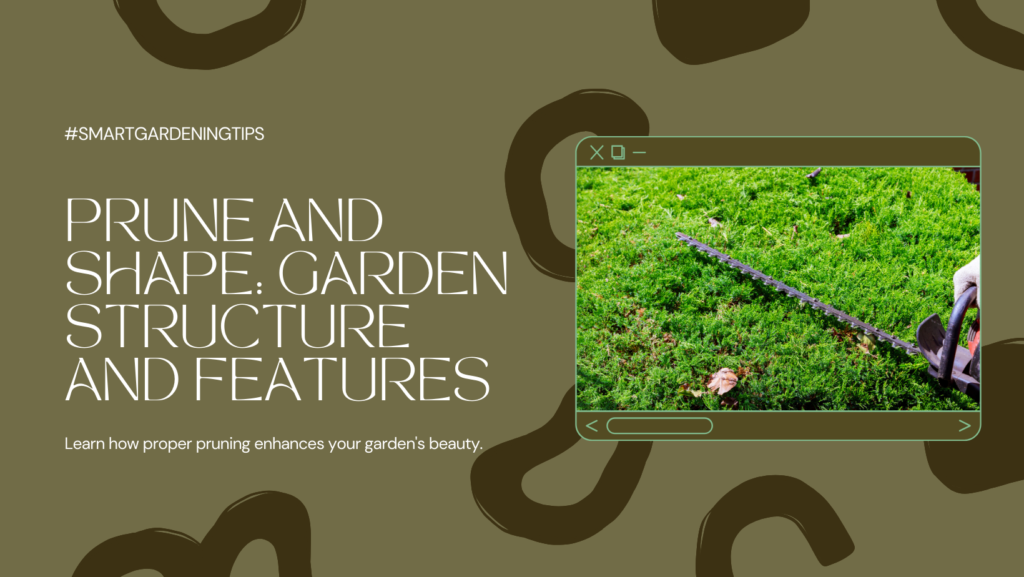
Give your garden hedges some attention by pruning and shaping them. Trimming away any overgrown branches will help maintain their shape and prevent them from encroaching on other areas of your garden. Regular pruning also promotes healthier growth.
4. Clean and Maintain Water Features

If you have a pond, fountain, or any other water feature in your garden, ensure they are cleaned and well-maintained. Remove any debris, such as fallen leaves, and check the water quality regularly. Consider adding a net or cover to prevent leaves from clogging the water feature.
5. Care for Garden Furniture
Don’t forget about your garden furniture! Clean and inspect outdoor seating, tables, and other garden furniture for any signs of damage or wear. Apply a protective coating or cover them when not in use to extend their lifespan and maintain their appearance.
Remember, by maintaining the structure and features of your garden, you can create a beautiful and inviting outdoor space for enjoying the autumn season.
Keep these tips in mind to ensure that your garden remains a stunning oasis throughout autumn. By maintaining the garden structure and features, you’ll create an inviting space for relaxation and entertainment. Take the time to care for these elements, and your garden will reward you with beauty and functionality.
FAQ
Q. How do I prepare my garden for autumn?
A. To prepare your garden for autumn, start by cleaning up any debris, such as fallen leaves and dead plants. Cut back any perennials that have finished blooming and trim any overgrown branches. It’s also a good time to fertilize the soil and remove any weeds. Lastly, consider planting new foliage that will provide vibrant colors during the autumn season.
Q. What tools do I need for autumn garden care?
A. Some essential tools for autumn garden care include a rake for clearing leaves, a garden shears or pruners for trimming plants, a shovel for soil preparation, and a wheelbarrow or garden cart for hauling debris. You may also need a mulching mower or leaf blower for larger areas. Having the right tools will make your autumn garden care tasks more efficient.
Q. Why is pruning and trimming important in autumn garden care?
A. Pruning and trimming are important in autumn garden care because they help maintain the health and aesthetics of your plants. Removing dead or diseased branches will prevent the spread of diseases, and trimming overgrown plants promotes better airflow and sunlight penetration. It’s best to prune and trim during the autumn months when plants are dormant or entering dormancy.
Q. How do I prepare the soil for autumn gardening?
A. To prepare the soil for autumn gardening, start by removing any weeds or dead plants. Then, loosen the soil with a garden fork or tiller and add compost or organic matter to improve its fertility and drainage. It’s also important to test the soil’s pH levels and adjust them if necessary. A well-prepared soil will provide a nourishing environment for your autumn plants.
Q. How do I choose the right fertilizers for my autumn plants?
A. When choosing fertilizers for autumn plants, look for a balanced formula that provides the necessary combination of nitrogen, phosphorus, and potassium. Nitrogen promotes green leafy growth, phosphorus supports root development, and potassium strengthens plants’ overall health and resistance to diseases. Consider using slow-release or organic fertilizers for gradual and sustainable nutrient release.
Q. How do I plant and transplant for autumn color?
A. To add autumn color to your garden, consider planting new foliage such as ornamental grasses, mums, asters, and pansies. When transplanting, choose a cool and cloudy day to minimize stress on the plants. Dig a hole slightly larger than the root ball, place the plant in, and backfill with soil. Water thoroughly after planting and provide regular care to ensure their healthy growth.
Q. Why is fall cleanup important in garden care?
A. Fall cleanup is important in garden care because it helps remove dead plant material, fallen leaves, and other debris that can harbor pests and diseases. Cleaning up the garden also prevents the spread of fungal infections during the wet autumn months. Proper disposal of garden waste, such as composting or using designated green waste bins, ensures a clean and healthy environment.
Q. How do I protect my garden for winter?
A. To protect your garden for winter, start by mulching around the base of plants to insulate roots and conserve moisture. Cover tender plants with frost blankets or burlap to shield them from freezing temperatures. Bring potted plants indoors or move them to a sheltered location. Disconnect and drain outdoor water sources to prevent freezing. Maintaining garden structures and removing heavy snow buildup is also crucial.
Q. What are some winterizing tips for garden protection?
A. Some winterizing tips for garden protection include wrapping the trunks of young trees with tree wraps to prevent winter sunburn and frost cracks. Applying a layer of mulch around the base of plants helps insulate roots and regulate soil temperatures. Avoid overwatering as excess moisture can lead to root rot. Prune broken branches and clean up fallen leaves and debris regularly to minimize the risk of disease.
Q. How do I maintain garden structure and features during autumn?
A. To maintain garden structure and features during autumn, regularly inspect and repair fences, gates, trellises, and other structures. Clean and treat wooden features to protect them from winter moisture and rot. Drain and store outdoor hoses and fixtures. Bring delicate or fragile garden decorations indoors or store them in a protected area. Taking these steps will ensure the longevity of your garden’s hardscape elements.
Conclusion
Congratulations! You are now equipped with essential tips and knowledge on how to care for your autumn garden. By following these practices, you can create a stunning garden filled with fall beauty and ensure its readiness for the winter months.
Preparing your garden for autumn is an important step to take to safeguard your plants and allow them to thrive in the coming season. With proper soil preparation, pruning and trimming, and the selection of the right fertilizers, your garden will flourish with vibrant colors and healthy growth.
Don’t forget to take the time for fall cleanup and to protect your garden from winter’s harsh conditions. Whether it’s covering delicate plants, winterizing your irrigation system, or maintaining garden structures, these measures are crucial for the overall health and longevity of your garden.
So, as you prepare your garden for autumn, take pleasure in witnessing the colorful transformation of nature. Your efforts will be rewarded with a beautiful and thriving autumn garden that will bring you joy and satisfaction, year after year.



